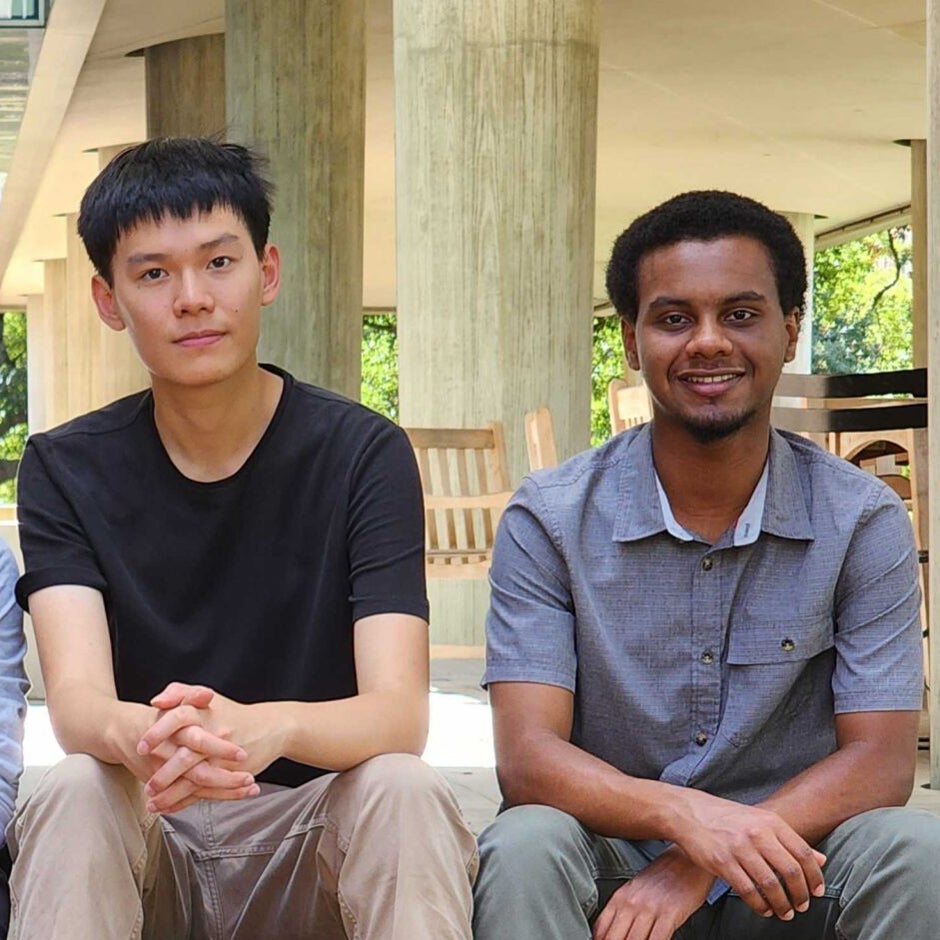Dark matter is a substance believed to comprise much of the universe. Yet it hasn’t been seen directly — its existence is inferred from gravitational effects on stars, galaxies and light. So what is it made of? That is the question that senior physics majors Jonathan Thomas and Wisha Wanichwecharungruang, undergraduates in the research group of Mustafa Amin, are hard at work answering.

The pair met freshman year in Amin’s Honors Mechanics course. Jonathan was a physics major with an interest in computer science, and Wisha was a computer science major with an interest in physics. While they’d met and worked on homework together, they didn’t become research partners until the class ended. On the final day, Amin “gave an overview of his research, what cosmology is, and the questions you ask in the field,” recalled Jonathan.
Interested by the cosmology and the computational nature of work, Jonathan replied right away. Wisha did too, but more out of a sense of curiosity about the research process itself, he said. “I did not know what I was expecting. That’s the fun part. I was like, ‘There’s no experiment to be done in this field, so what do these people do all day? Sit in the office, close their eyes and think of random things? I gotta start seeing what they do.’”
They began working in Amin’s lab the following spring, continued through a Summer Undergraduate Research Fellowship program coordinated by Rice’s Department of Physics and Astronomy and remained active in the lab throughout their time at Rice.
Their research into dark matter focused on “halos,” large roughly spherical structures of dark matter believed to surround the visible parts of galaxies and even extend beyond the outer edges of a galaxy’s visible structure.There is ongoing debate about the structure of these halos and the types of dark matter they contain.

In Amin’s group, Jonathan and Wisha used analytic methods and computer simulations, and each decided to double major in physics and computer science. One area of focus involved the conjecture that a dark matter field may be present throughout space and could present itself as waves. Some of these waves are predicted to form into solitons, special waves that are stable and do not dissipate as they propagate through space. Wisha and Jonathan simulated the formation of dark matter solitons computationally, creating predicted density profiles that could be compared with astronomical observations and used to test the properties of hypothetical dark matter particles.
Wisha discovered a love for the process of research and the act of discovery. “It’s really fun,” he said. “It's a creative process, and at the same time, it’s precise. It’s mathematical. And for me, as an undergrad, it let me have a deep dive into a very specific field, doing things that I probably wouldn’t have touched in my undergrad studies if I was not doing this.”
The pair co-authored two publications with Amin and postdoctoral researcher Mudit Jain that explored how long it took solitonic structures to emerge in matter halos in different models of wave-like dark matter. Future observations of solitons, such as from deflection of stars or light that passes near them, might allow physicists to delineate the fundamental nature of dark matter.
“I remember once Mustafa said, ‘We’re the only four people in the entire world that know this right now.’ And that stuck with me,” Jonathan said. “Like, at this very moment, we’re the only people that know this one thing about the nature of our universe.”

